 What Are China’s Economic Priorities This Year?
What Are China’s Economic Priorities This Year?(Yicai Global) April 7 -- The watchword for Chinese economic policy is “high-quality development”. It was the term that President Xi stressed when he spoke to the 14th National People’s Congress last month.
In China’s recent past, economic policy was oriented to making sure that the economy grew fast enough to provide employment for the tens of millions of young people that were entering the labour force every year. Massive investments were made and the economy did grow rapidly. There was a commensurate increase in employment. However, China’s reliance on extensive growth led to environmental degradation, high debt and large income disparities.
High-quality development stresses consumption over investment and raising total factor productivity over increasing the volume of inputs. It aims to improve supply chain security and strengthen the digital economy. High-quality development means preserving the environment while striving to ensure that material benefits are shared widely. In short, high-quality development is sustainable development.
With the conclusion of the Two Sessions last month in Beijing, we are better able to appreciate how high-quality development will inform economic policy this year.
In his Report on the Work of the Government, outgoing Premier Li Keqiang set a target of “around” 5 percent for GDP growth. Many observers feel that growth may end up being stronger. Last year’s pandemic-induced slowdown left the level of GDP well below trend. A steady return to potential by the fourth quarter (Figure 1) would imply growth very close to 6 percent for the year as a whole.
Figure 1
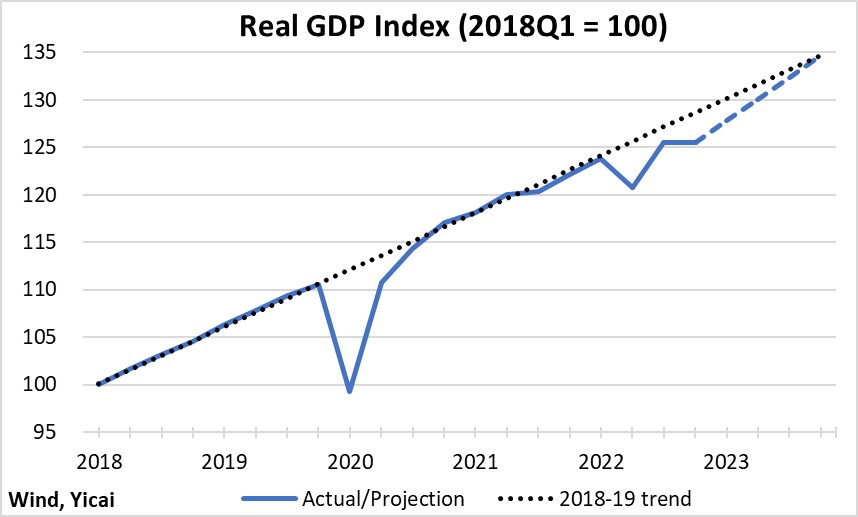
In setting a conservative figure for growth this year, the government may want to signal that it will return to addressing financial risk. Data from the BIS show that during the pandemic period, credit expansion in China was among the most rapid in the G20 (Figure 2).
Figure 2
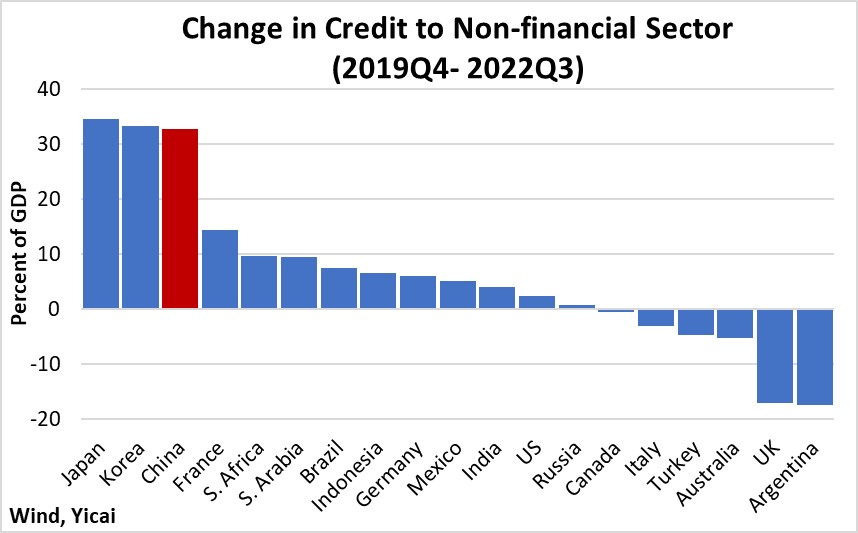
Indeed, in his Work Report, Li spoke of the need to guard against regional and systemic risks. He explicitly targeted the dangers of local government leverage saying that a build-up of new debts should be prevented while existing ones should be reduced. He also said that the unregulated expansion of the real estate sector, one of China’s most indebted, should be curbed.
The importance policymakers are putting on addressing financial risks can be seen from the way its regulatory authorities are being restructured.
A Central Financial Commission is being established under the Party’s Central Committee. The Commission will be responsible for top-level planning, coordination and overall advancement of financial stability and development. It will replace the State Council’s Financial Stability and Development Committee, which had similar responsibilities.
Moreover, a new state administration for financial regulation and supervision will replace the China Banking and Insurance Regulatory Commission (CBIRC). In addition to taking on the CBIRC’s duties, the new administration will assume the People’s Bank of China’s responsibilities for financial holding companies and consumer protection and those of investor protection from the China Securities Commission (CSRC). Whereas the CBIRC had been a public institution under the State Council, the new administration will be directly administered by the State Council. This upgrade in status is likely designed to give it more clout in its financial stability work.
The CSRC is also being upgraded to an institution directly under the State Council. It will take over the review of corporate bond issuance – including those of local government financing vehicles – from the National Development and Reform Commission (NDRC). The CSRC had already been responsible for reviewing the bonds issued by listed companies.
With the recovery in train, there will be less budgetary support for the economy this year than there was in 2022.
The headline fiscal deficit of the combined central and local governments is budgeted to be the equivalent of 3 percent of GDP, or a touch higher than the 2.8 percent of GDP recorded in 2022. However, in assessing fiscal stimulus it is important to account for the government’s managed funds, which mostly reflect real estate activities, and drawings from the fiscal reserve. When these elements are accounted for, the “adjusted national deficit” came in at 6.4 percent of GDP last year (Figure 3). The outturn in 2021 was 4.2 percent of GDP. The difference – 2.2 percent of GDP – is a rough estimate of fiscal stimulus last year.
This year’s budget document suggests that the adjusted national deficit will be very close to last year’s outturn, which means that the fiscal stimulus will be minimal.
Figure 3
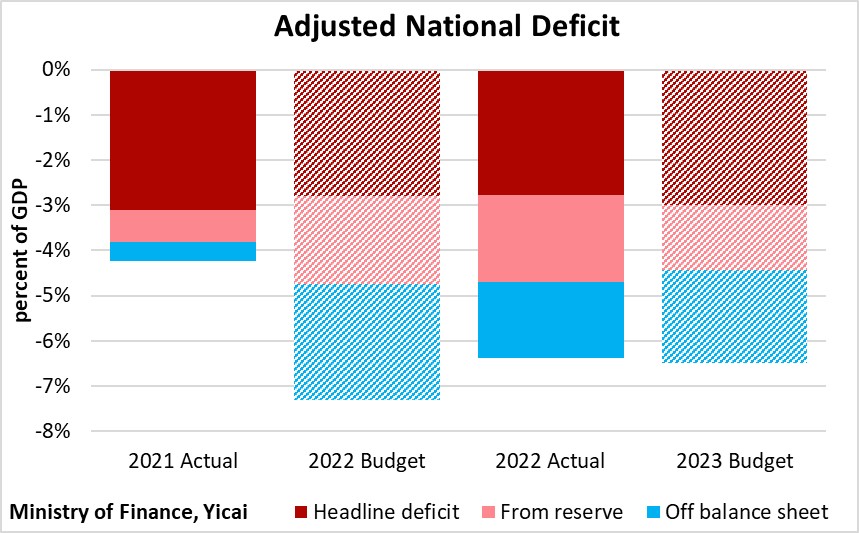
The Work Report says that the government will make the recovery and expansion of consumption a priority.
During the last three years, Chinese consumers were uncertain about the course the pandemic would take. This led them to increase their precautionary savings. During 2020-22, the personal savings rate rose to 33 percent of disposable income, up from 30 percent between 2017-19 (Figure 4).
Figure 4

The Work Report pledges that the increase in personal incomes will be generally in step with economic growth and I believe that the government’s support for consumption will be largely indirect. It will come from the confidence effects of the economic rebound, efforts to maintain employment and the releasing of pent-up demand. I do not expect large-scale transfers of fiscal resources to households.
A key element of high-quality development is the emphasis on science, technology and innovation.
Despite the pandemic, China’s spending on research and development continued to rise, topping CNY 3 trillion last year (Figure 5). China’s investment in R&D is very large for a country of its income level. Last year, it spent more than 2.5 percent of GDP. In comparison, the 27 European Union members have been spending the equivalent of some 2.2 percent of their GDP.
The Work Report speaks of accelerating R&D activities, so I would expect China’s numbers to continue increasing.
Figure 5
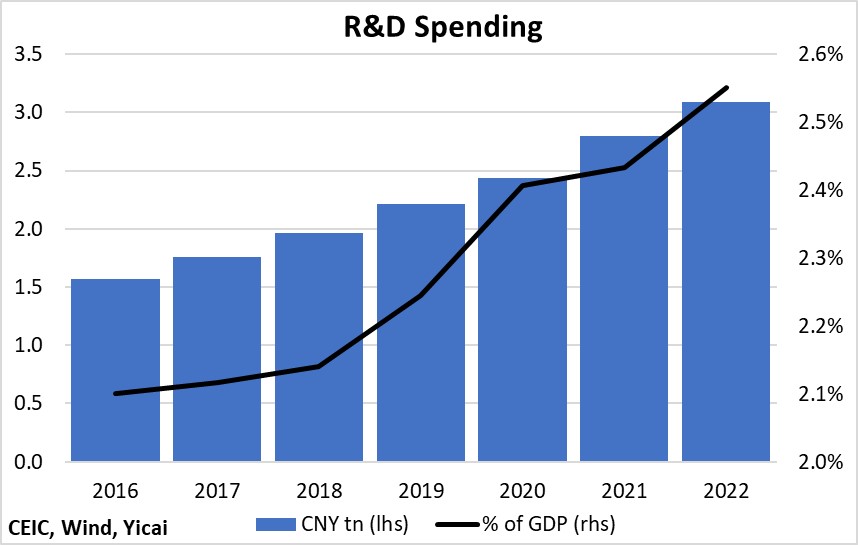
In a similar vein, China plans to have 2.9 million 5G base stations in place by the end of the year. This would represent tremendous growth from the 200,000 that had been constructed through March 2020 (Figure 6). It is estimated that the US only had 100,000 base stations installed in 2021, while the EU had 256,000.
China is also promoting the industrial application of 5G and plans to build more than 10,000 5G-enabled factories during the 14th Five-Year Plan period (2021-2025).
Figure 6
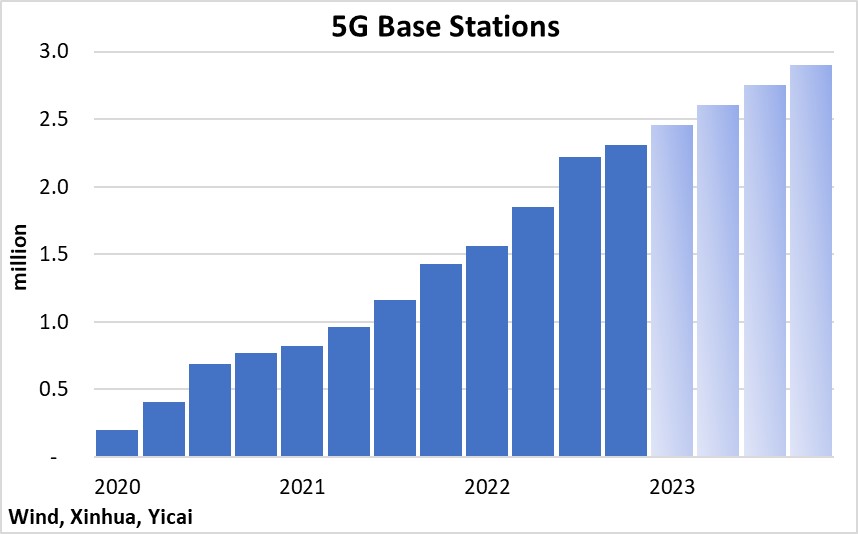
To advance the construction of its national innovation system, a central commission for science and technology has been set up under the Party’s Central Committee. The commission will be responsible for strategic planning and coordination.
In addition, the Ministry of Science and Technology (MOST) is being streamlined. It will no longer be responsible for the review and management of specific projects. Moreover, some of its responsibilities are being transferred to other ministries. MOST will concentrate on supervising scientific research institutions, inspecting the implementation of research projects and evaluating scientific research results.
According to Xiao Jie, the Secretary-General of the State Council, the restructuring of responsibilities was undertaken to rationalize scientific leadership and better overcome difficulties in developing core technologies.
Policymakers see the use of data as an integral part of high-quality development and they have established a National Data Bureau under the NDRC. Data regulation has been handled by several agencies, so centralizing the coordination of data resources and promotion of the digital economy in the Bureau should simplify and clarify matters.
A regulatory regime that protects intellectual property is a prerequisite for an innovative business environment. With that in mind, the State Intellectual Property Office will be upgraded from being a national bureau managed by the State Administration for Market Regulation to an institution directly under the State Council. This move is intended, among other things, to “expand high-level opening up to the outside world” as a way of reassuring foreign investors that their intellectual property will be respected.
So, if we look at the targets, the budget, the institutional restructuring and policymakers’ pronouncements, we can get a clear sense of this year’s economic priorities. With the pandemic behind us, the economy needs less policy support. This allows policymakers to focus on reining in financial risks. Moreover, it gives them scope to redouble their efforts to address key gaps in the supply chain while moving forward on promoting the digital economy. Barring unforeseen events, 2023 could, indeed, be a year of high-quality development.